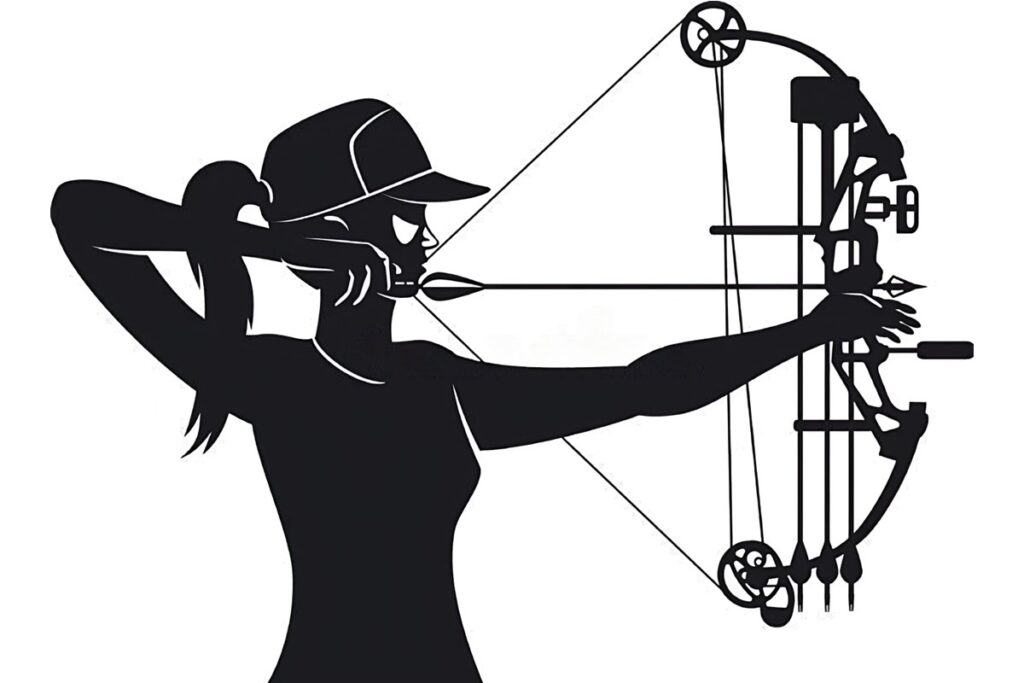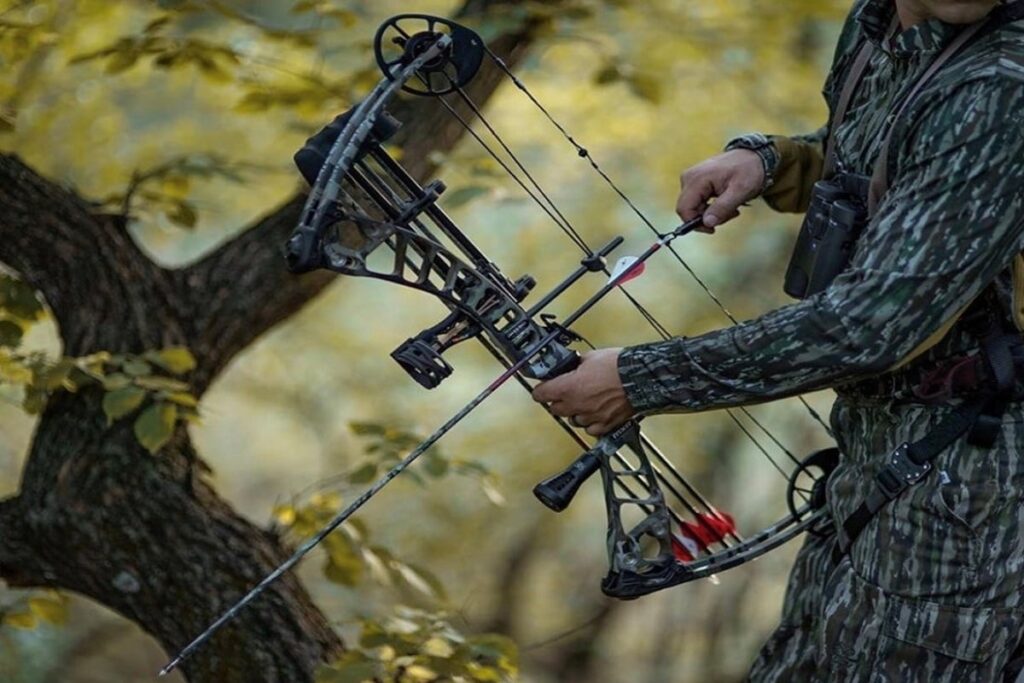If you’re a beginner archer and are looking to buy the best bow that will suit your needs, there’s a lot of information out there.

With so many different bows on the market today, it can be difficult to know where to start. Here we’ll take a look at some things you should consider before making any purchase.
First off, what exactly is one of these “best” bows? Well, when most people think about buying a bow, they tend to go after something with an extremely high draw weight or length, usually 50+ pounds (22 kilograms) in draw length and over 500 pounds (226 kilograms) in maximum weight.
However, not all newbies need this extreme equipment. In fact, if you’ve never been able to hold more than 40 yards’ worth of arrows without getting tired, then maybe you don’t need anything too heavy! If so, here’s our list of the five best bows for beginners.
What Are the Best Bows for Beginners?
A good place to begin might be to ask yourself why you want to use a bow, as well as how much time you have to practice and train regularly. Once those two factors are determined, you can narrow down which type of bow would work best for you.
Here’s a quick breakdown of each category mentioned below. We’ll also briefly touch upon their history, types, and other considerations.
1. Recurves Bows
These bows are well-known for being excellent beginner bows due to their shorter draw lengths but higher draw weights. This makes them easier to handle than longer bows while still providing enough power to do decent damage.
They offer a lower cost-per-arrow compared to other options, plus they’re relatively easy to transport thanks to their compact size. The draw length ranges from 32″ to 60″. Typical prices range between $200 and $400, depending on brand and quality.
2. Compound Bows
A popular choice among experienced archers, compound bows provide strong performance while requiring little maintenance. As such, they require less upkeep and training than recurves, allowing beginning shooters to focus instead on technique development and accuracy.
Their downside is that they aren’t nearly as portable as recurves, nor are they very cheap either. Prices vary greatly by model and manufacturer but expect to pay around $500 for a basic starter pack.
3. Longbows
Also called long-draw or traditional bows, longbows are probably the oldest form of hunting weaponry used worldwide. Due to their large size, only experts who know how to properly store and maintain them should attempt to use them. Still, this doesn’t mean that newcomers shouldn’t give them a try, though.
On the contrary, learning proper care techniques for longbows provides valuable experience for anyone interested in shooting them later on. You won’t find these anywhere else except online since they were banned by law decades ago due to safety concerns. Expect to spend upwards of $1000 for a top-notch bow like this.
4. Shortbows
Shortbows, like longbows, have shorter overall lengths and lighter draw weights. Because of their small size, however, they may not provide adequate power for heavier targets.
Nevertheless, they’re suitable for beginners who just want to get familiar with the sport. Typically priced under $300, this option works fine for those who plan to shoot recreationally rather than competitively.
5. Target or Competition Bows
Last but not least, we have competition bows. While you’d normally associate these with sports like bowling, billiards, darts, etc., modern times have seen a rising popularity in target archery.
Competitions consist of hitting various sized paper and cardboard targets set up at varying distances and angles. Generally speaking, competitors prefer larger bows that produce greater amounts of force.
These models often weigh hundreds of pounds, have draw lengths of 45″-70″, and come equipped with accessories such as sights and quivers. Unfortunately, they’re quite expensive, ranging from several thousand to tens of thousands of dollars.
Now that you understand the difference between each style of bow, let’s talk about what determines its effectiveness.
What to Look Out for When Buying Bows
Once you’ve decided whether or not you really need a particular type of bow, the next thing to decide is what features matter most to you. To help make things clearer, I’ve broken down what defines each kind into three main categories based on function.
1. Stability and Strength
How powerful does a bow need to be? What level of stability must it possess? Is it important to keep the limbs straight during use? Can you adjust the cams easily? Does it have a reliable locking mechanism?
All of these questions relate directly back to a bow’s strength and ability to generate sufficient energy to hit hard objects far away. Additionally, having a stable frame enables better arrow control and precision.
2. Speed and Range
When considering range, remember that distance equals speed divided by velocity. A faster bow means that projectiles fly farther per shot, right? Not necessarily.
Velocity refers to how fast a bow releases an arrow, whereas velocity refers to how quickly the projectile travels once released. Therefore, increasing both together actually decreases the effective range of a given bow. Instead, what matters most is how consistently fast your shots are.
3. Price to Value Ratio
Finally, price plays a significant role in determining which bow best fits your budget. Obviously, pricier ones are going to outperform cheaper alternatives, but sometimes value has more influence on affordability.
After all, wouldn’t you feel inclined to stick with a product that offers solid performance even if it costs significantly less? Just bear in mind that the cheapest bows are generally made with inferior materials and components, so it’s wise to avoid buying one unless you have no choice.
More Information on Bows for Beginners
With everything considered, here are the five best bows for beginners according to our criteria above.
1. Recurves Bows
This classic design dates back centuries and was originally created by ancient Chinese civilizations.
Components
It consists of a grip area near the center followed by four separate sections attached to the riser. Each section contains multiple cables that run parallel to the bowstring and attach to a pulley system located towards the end of the limb opposite the grip.
These cables act like levers and allow the bow’s nock point to move further along the bowstring, thus extending its reach. Most recurves come with adjustable cam systems that regulate the amount of leverage provided by each cable. Recurves are known for producing consistent results with moderate recoil, meaning that they have low kickback levels. Draws range from 28″ to 42″. Average prices hover around $250.
Features
Recurves are lightweight and can easily be stored in your vehicle’s trunk or on your camping trip. As you might expect, they require a lot of practice to master, but once you do, they’re extremely powerful weapons that can be used for target archery and hunting. They’re relatively light, easy to store and transport, and they require minimal practice to master.
Although you can purchase recurves for target archery, it’s usually more practical to buy a crossbow. They’re typically easier to use in the field and will give you a higher rate of fire.
It’s also important to note that recurves are usually less powerful than longbows. To put it simply: if you want an extremely powerful weapon, a longbow is the way to go. If you want a lighter weapon, then you should opt for a recurve bow.
2. Compounds Bows
While they came onto the scene relatively recently, compounds are now becoming increasingly popular among experienced archers.
Advantages
One major advantage of owning a compound bow lies in its simple setup process. Unlike longbows, you don’t have to worry about storing or maintaining them. Simply grab the bowstring and pull until fully drawn, then release. Then repeat until you are satisfied with the outcome.
Also, unlike recurves, compound bows rely solely on elastic material instead of mechanical parts, resulting in less wear and tear.
Drawbacks
Since the bow is held closer to the body, it’s slightly harder to aim accurately. Bowstrings tend to break fairly soon, but the rest of the bow remains functional for years. Draw lengths typically sit somewhere between 30″ and 50″. Around $350 is the average price.
3. Longbows
The longbow is named for its long limbs, which are typically made out of wood and require a great deal of strength to draw. However, this design has a few drawbacks. They’re relatively heavy (and therefore less portable), they require a lot of space for storage and assembly, and their limbs are usually not interchangeable.
However, this does not mean that the long bow is inferior to other designs. It’s still a very powerful weapon that can be used for hunting and target archery.
Some Points to Note
As previously stated, these are rarely found outside of competitions nowadays due to legal issues and safety hazards. But don’t despair—simply because a certain item isn’t available elsewhere doesn’t mean that it’s useless! Quite the opposite, in fact.
Learning how to properly store and clean longbows gives beginners lots of practical knowledge, which helps immensely when trying to master the basics. Plus, they’re surprisingly affordable. Overall, expect to pay roughly $150 for a good beginner’s package.
4. Shortbows
Like longbows, short bows are mainly intended for recreational purposes. Although they lack the massive power output that comes with longbows, these lightweight versions perform adequately enough for novice users. Furthermore, similar to longbows, they’re pretty durable. Pricing starts at around $100.
5. Target or Competition Bows
At first glance, these kinds of bows seem unbeatable. And to a degree, they are. That said, they have limitations. First of all, they require substantial space to store and assemble.
Second, they’re quite fragile and susceptible to breaking if mishandled. Third, they’re incredibly pricey. In general, expect to shell out upwards of $500 for a top-quality bow.
So, although these kinds of bows certainly have their advantages, they’re beyond unsuitable for beginners. Don’t fret though—you’ll surely grow accustomed to regular shooting eventually.
Depending on personal preference, target archers should definitely opt for something like a recurve or compound bow. Otherwise, choose a shortbow if you enjoy shooting recreationally.
Finally, here’s a quick rundown of the history of bows.
A Brief Overview of Bows
Bows have existed for thousands of years across numerous cultures and regions. Early ancestors utilized wooden sticks, bamboo stalks, reeds, and animal horns. As technology progressed, inventors developed ever stronger designs, including iron frames. Eventually, crossbows appeared alongside catapults and ballistae.
Medieval Times
During medieval times, archers began wearing protective gear, which led to the improvement of protective clothing. And finally, in 1871, Samuel Ryder invented the bow drill, which enabled efficient wood processing through repeated whirling motions.
Victorian Era
Notably, the earliest bows featured limbs composed of sinew. Over time, however, fiberglass became widely used throughout Europe and North America. Some of the first bows to feature this material was called recurves, which became popular during the Victorian era.
Contemporary Era
They’re the closest siblings to longbows and were first developed by Chinese archers. Compound bows made a comeback in the 1950s, but they’re still rare today. They’re primarily used by hunters and those who enjoy competitive archery.
Comparing Some Bows
Recurves and Longbows
Bows have continued to develop throughout history, and the most recent design has been dubbed a recurve bow or longbow. These bows feature a straight handle that can be drawn by hand. It’s important to note that these designs are quite similar to traditional longbows.
Recurves and Compound Bows
In general, compound bows are generally more powerful than recurves but require a lot of practice to master. Recurves, on the other hand, have some minor disadvantages when compared to compound bows. To name just a few: they’re relatively heavy (and therefore less portable), they require a lot of space for storage and assembly, and their limbs are usually not interchangeable.
Crossbows and Longbows
As mentioned, crossbows were among the first to appear on the scene. They’re quite similar to longbows in that they also feature straight limbs. However, these limbs are attached to a bowstring. Instead of being pulled by hand, they’re instead pulled by a trigger mechanism. Crossbows are used primarily for hunting and target archery.
Longbows can be found in various cultures across the world, but they’re primarily used in Europe and North America. Their main purpose is to hunt, and they’re also a favorite among target archers. There are also certain types of bows that use the longbow design, the recurves. They’re typically less powerful than longbows but are more portable.
Wrap Up
Although a bow is a versatile tool that may be used for many different purposes, beginners should stick with short bows for recreational shooting. This kind of bow is both compact and inexpensive to purchase.
Furthermore, it’s easy to master. On the other hand, if you want to learn how to shoot a longbow, then by all means get some practice in. Otherwise, choose one of the beginner bows above.

